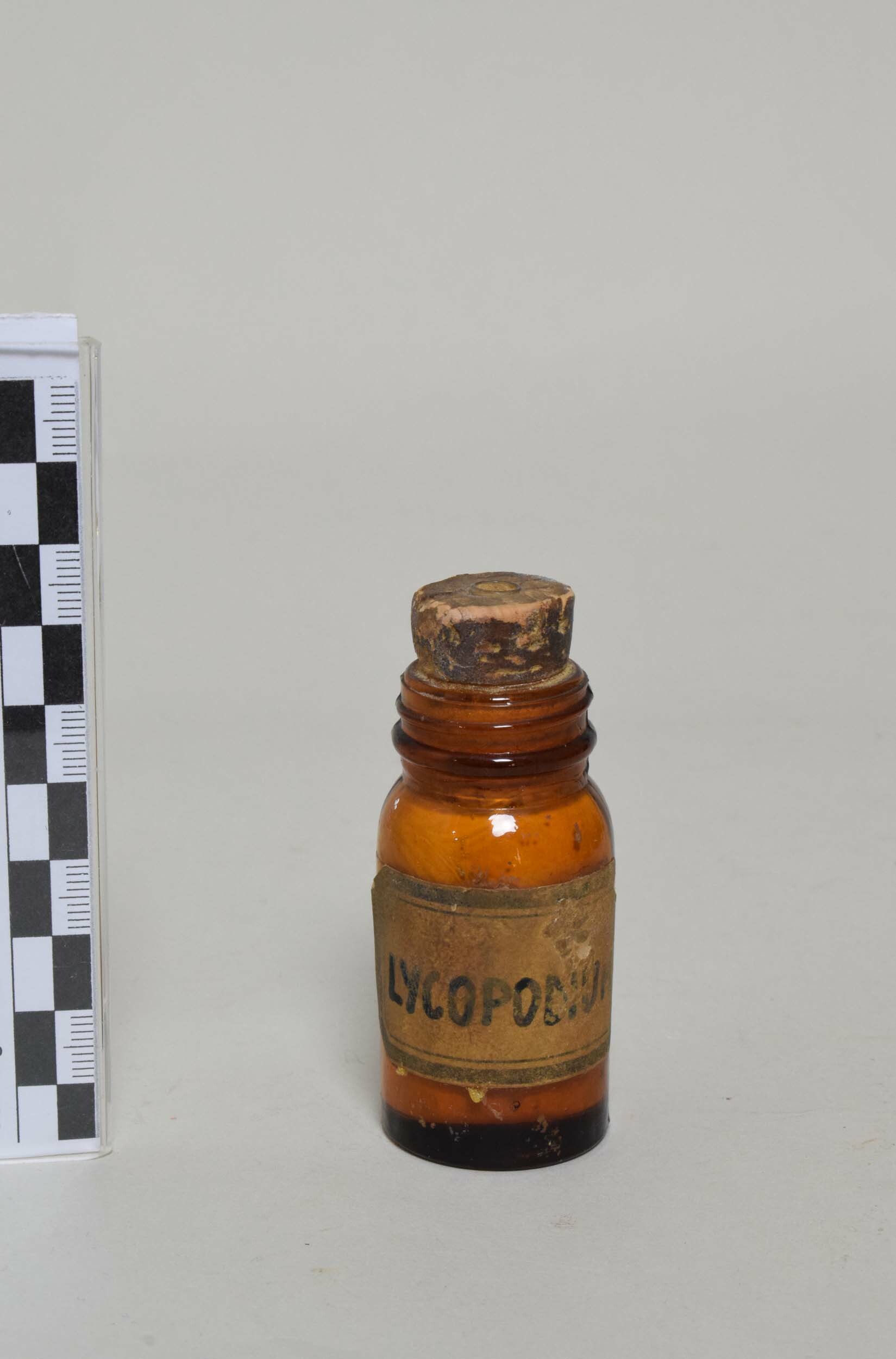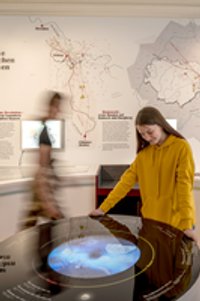Die kleine zylindrische braune Glasflasche mit Korkstopfen (mittiges Glasröhrchen) hat einen kurzen Hals mit zwei Außenrillen. Das handgeschriebene, blaugrün gerandete Etikett bezeichnet den noch vorhandenen Inhalt: "Lycopodium" (Bärlappmehl bzw. Bärlappsporen), ein Mittel, das gegen Blasenleiden verwendet wurde und krampfmindernd wirkte.
Bärlapp-Pulver wird auch zur Ummantelung von Pillen benötigt. Für die Herstellung der Pillenmasse wird aus den Wirkstoffen und einem Bindemittelmit einer Flüssigkeit eine Masse gemischt, aus der wird ein Strang geformt wird, der in der Pillenmaschine in Stücke abgeteilt und weiter zu Pillen geformt wird. Die kleinen Kugeln werden danach noch mit einem Pulver, z. B. mit Bärlappsporen bestreut oder überzogen, damit sie nicht verkleben und vor äusseren Einflüssen geschützt sind. (Quelle: https://www.pharmawiki.ch/wiki/index.php?wiki=Pillen)
en

